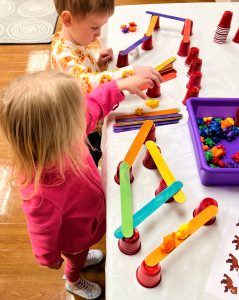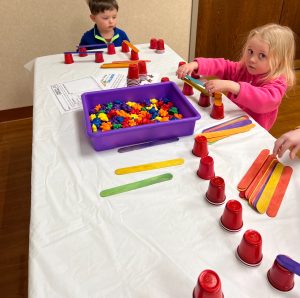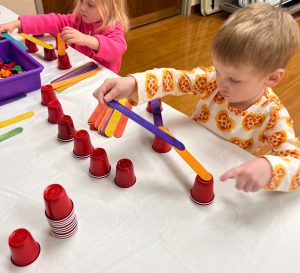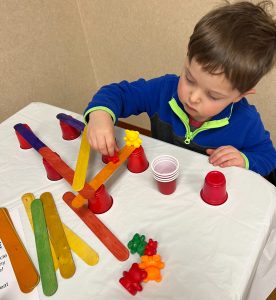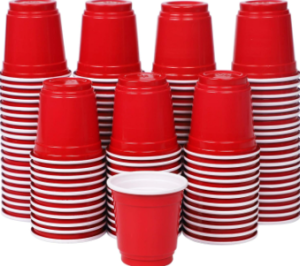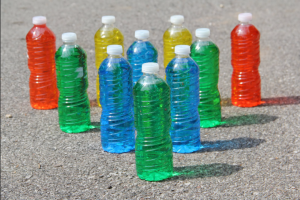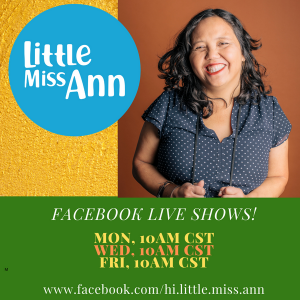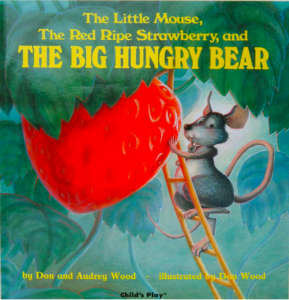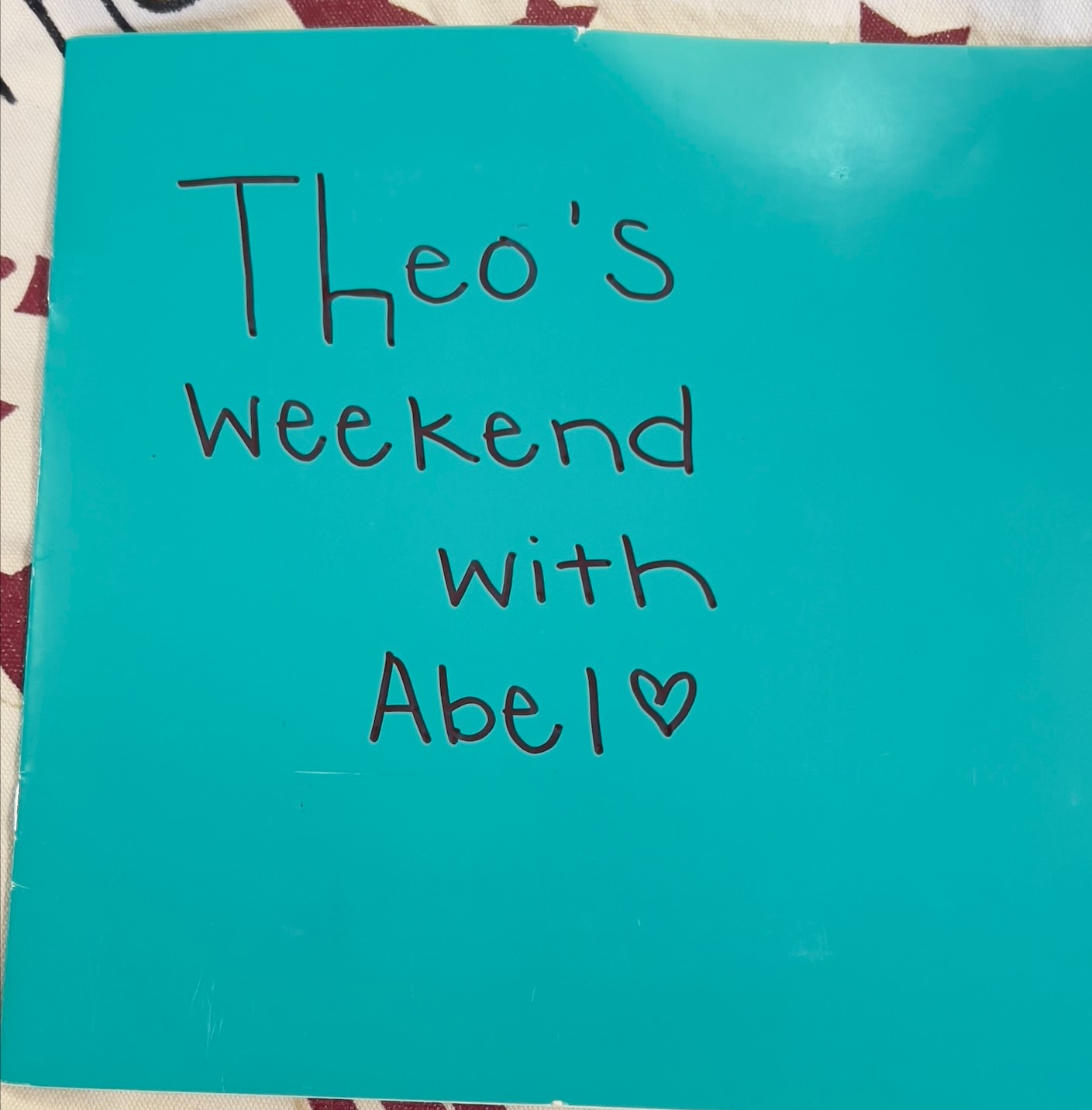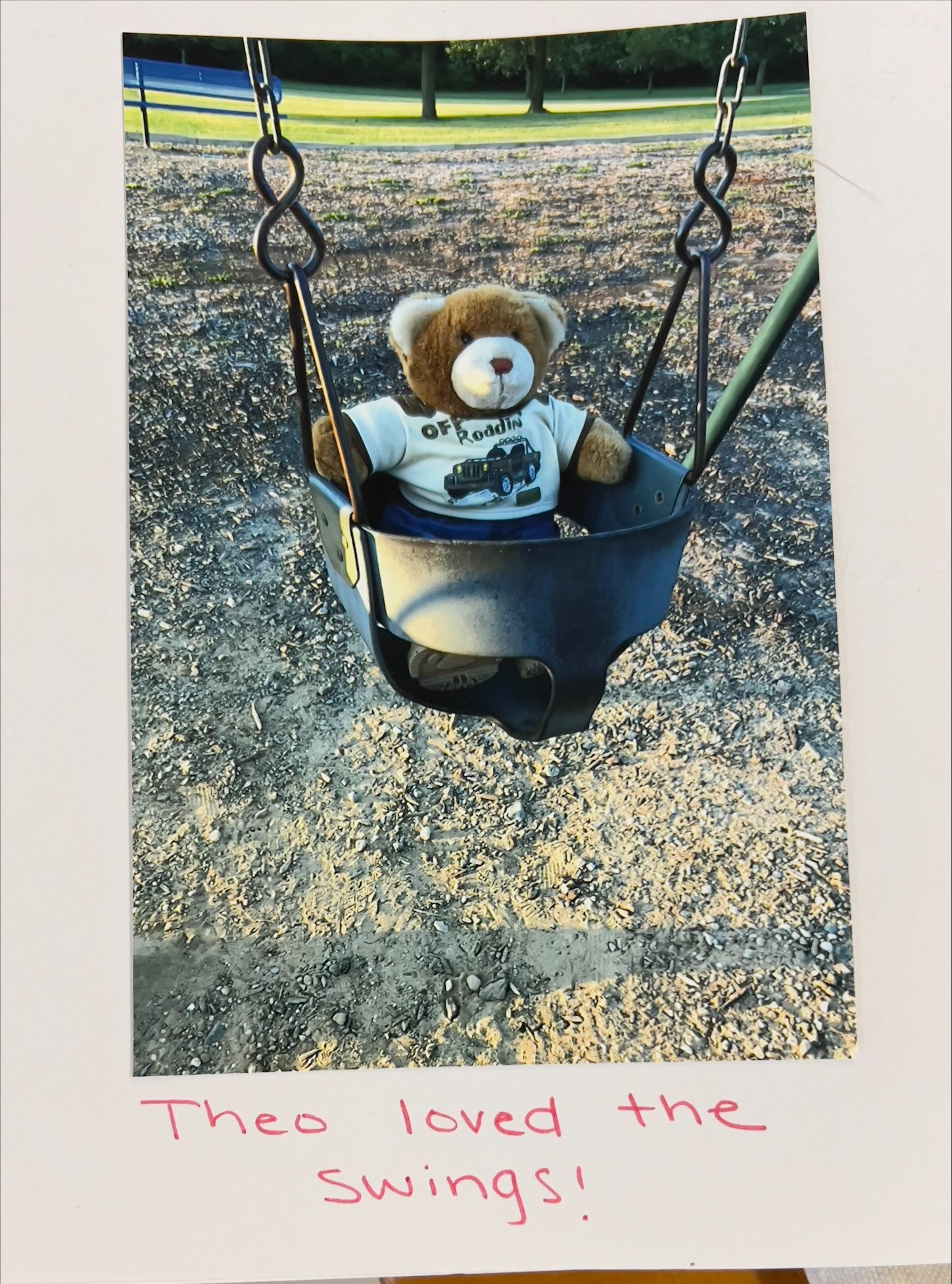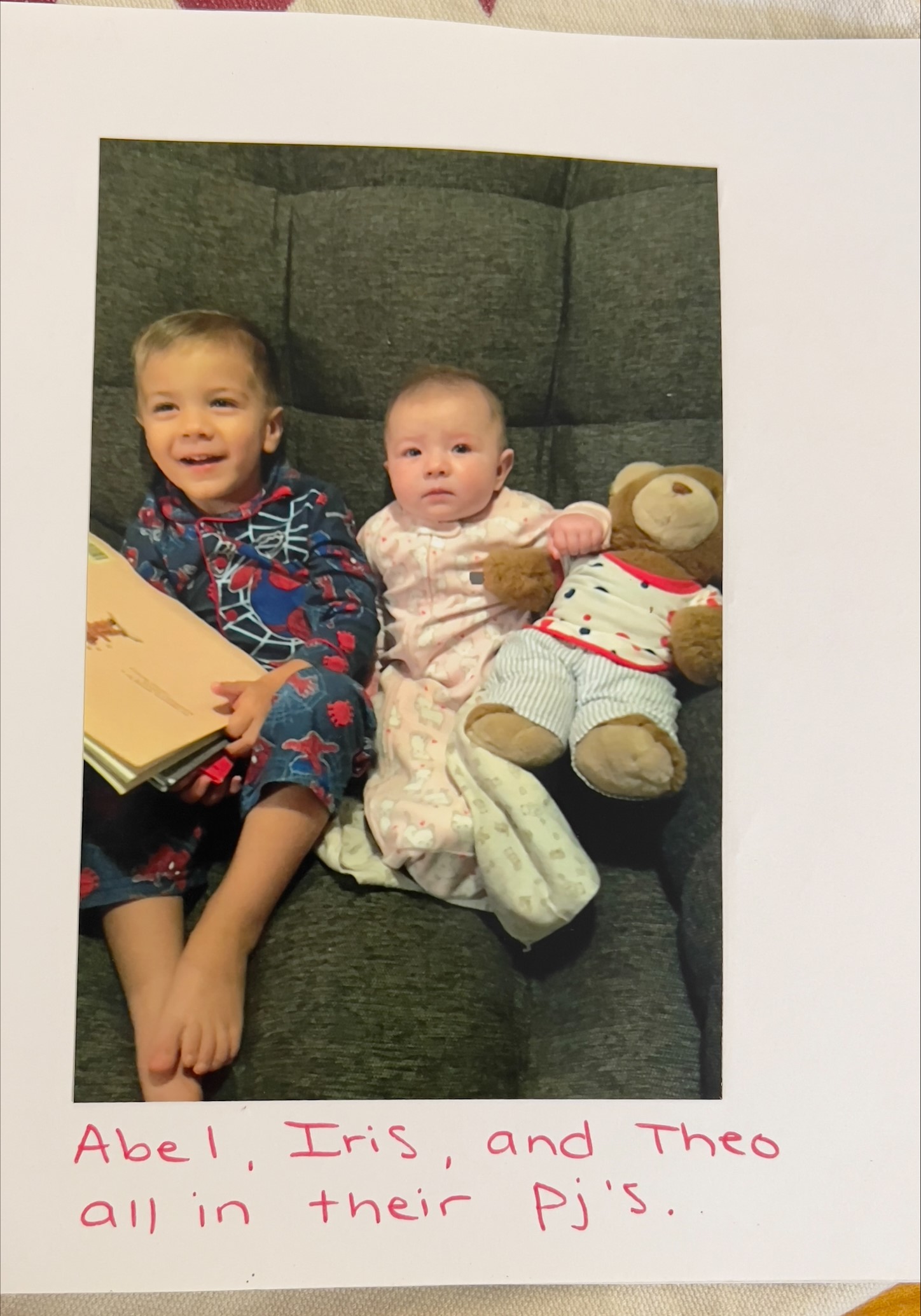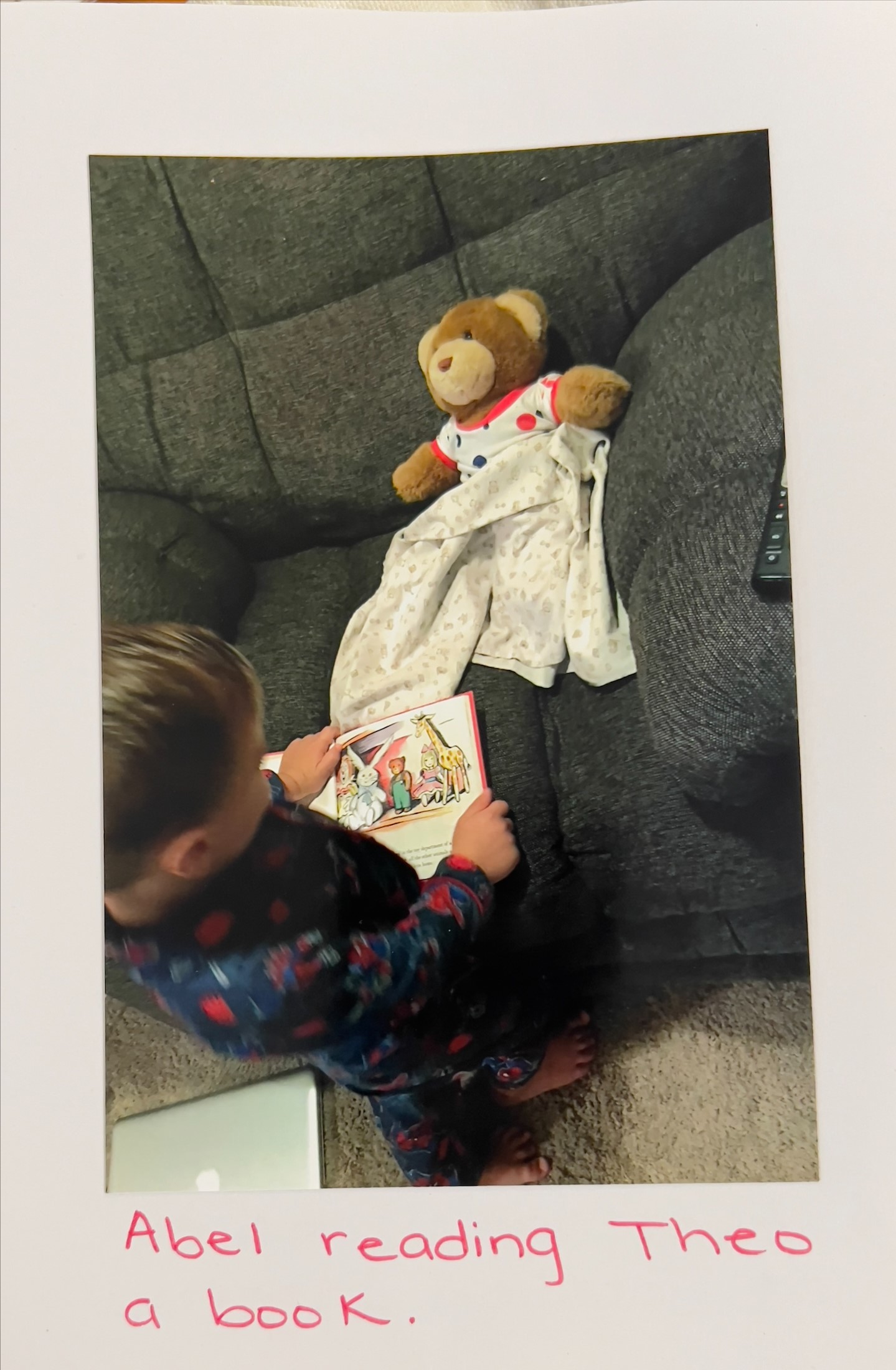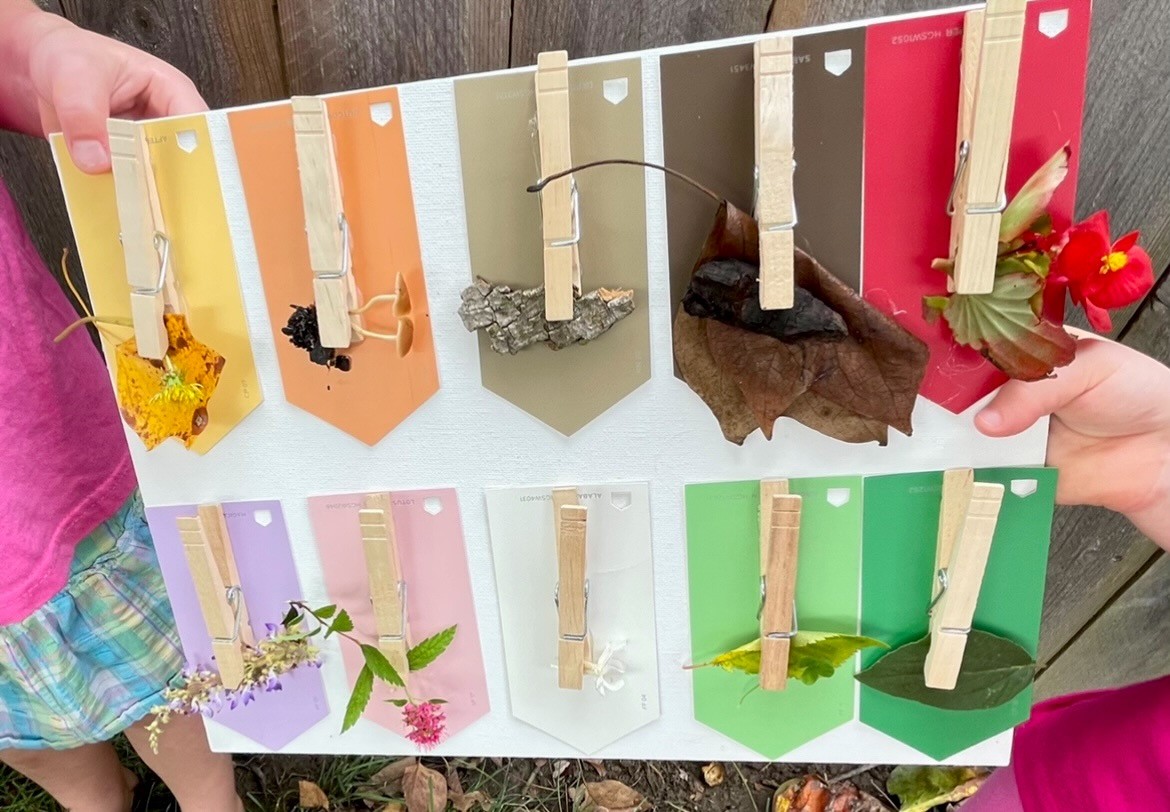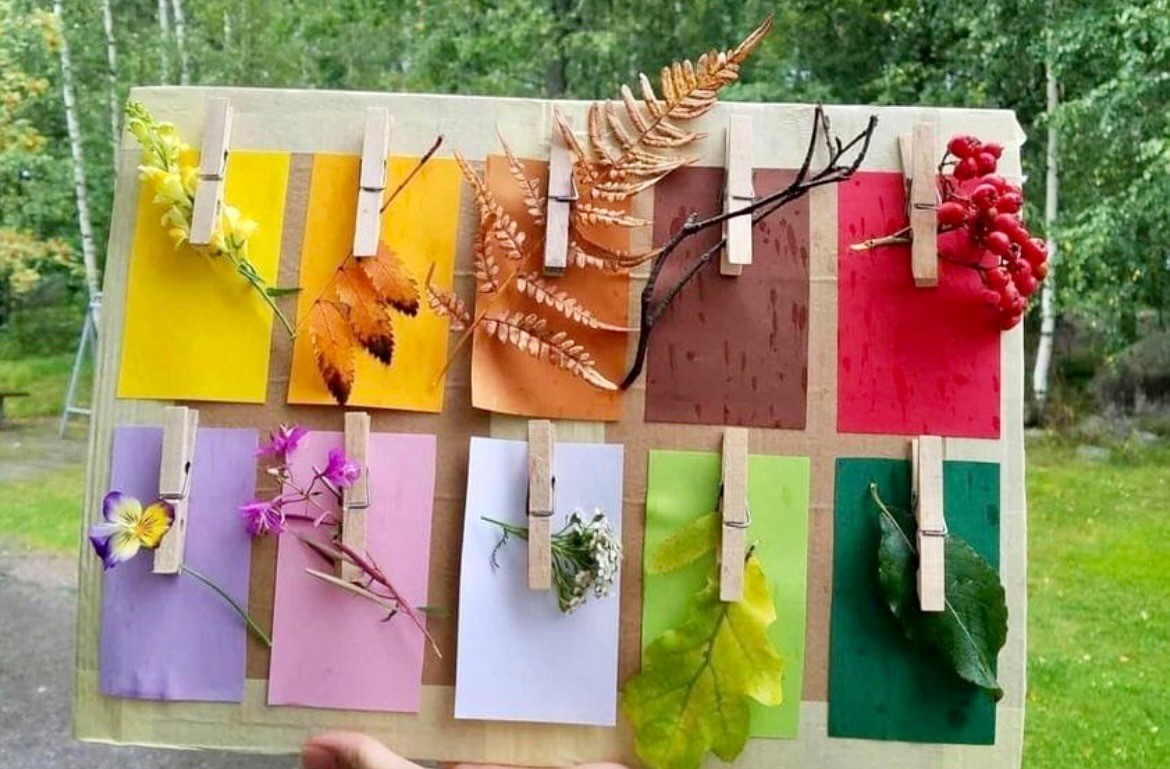Provider Stephanie McKinstry’s preschoolers arrived one day to a challenge: could they build bridges for bears to cross? How about a bridge big and strong enough for all of their bears to stand on at once?
The children got to work constructing their bridges from cups and popsicle sticks, arranging different shapes and patterns.
During construction, some bridge builders sang variations of “Going on a Bear Hunt”, like “Going on a Fish Hunt” because they knew that’s what bears like to eat!
If you want to do this in your own home, you’ll just need the following:

(if you don’t have counting bears, you can use buttons, game pieces, pompoms– really anything that isn’t too tricky to balance!)
Indiana providers: can you spot the Indiana Early Learning Standards being addressed with this activity?
Looking for an interesting textural addition to your play dough? Add birdseed and try this no-cook recipe, written to use with young children. Note: Skip the food coloring you might normally use to allow children to really notice the distinct colors of each type of seed.
- 2 ½ cups All-Purpose Flour
- ¾ cup Salt
- 2 tablespoons Cream Of Tartar
- ¼ cup Vegetable Oil
- 1 ¼ cups Boiling Water
- 2 cups birdseed
- Help children measure the dry ingredients.
- In a large bowl, have each child add an ingredient then take turns whisking together the flour, salt and cream of tartar.
- Adult adds the vegetable oil and boiling water, and using a spatula, mix until combined.
- Once it’s cool enough to handle, bring the children back together to knead the playdough in the bowl until it becomes smooth, about 2 minutes. (It may appear wet at first but will dry as you knead and the water gets fully absorbed.)
- Form the dough into a “bowl” and add birdseed to the center. Help children incorporate the seeds into the dough.
There are lots of common birds in Indiana that stick around for winter. Many of these are colorful favorites that evoke a winter feeling. Our two picks were Cardinals and Blue Jays.
Bird feeders are lively places during the winter months and their presence is important. Feeding winter birds can be a fun and educational activity for kids; they can learn about different species while also learning about their habitats, diets, and winter survival tools.
How We Explored Our Winter Birds:
- Create a bird observation center in your play area by setting up bird feeder stations. You can build your own from recycled materials such as milk cartons, recycled jugs or pinecones or purchase pre-made bird feeders.
- Next decide what type of bird seed you want to use. Investigate what types of food will attract which birds, and offer the children a choice of which they’d like to try– or fill one feeder with one type, and a second with another, and encourage the children to compare which birds they see around each.
- Placing feeders by a window for indoor viewing is an excellent idea for those cold winter days. You can create a chart on a whiteboard or large sheet of paper so they can check off birds they see on it.
- After a few weeks, compile your observations looking for patterns in birds observed at your feeders at different times of the day. Discuss the results.
For more bird-bassed fun, try these:
- Make bird seed play dough for your table activity or sensory table. Try picking up seeds with different shaped tongs and notice which is the most successful for different kinds of seeds.
- Go on a bird feather hunt and research to identify the bird it came from. Record children’s hypotheses and look for a live match!
Make your own game of bowling using recycled 1 or 2 liter bottles. make them fun by decorating them with colorful masking tape. Helpful tip, seal the top on with a glue gun so the bottles do not crush easily. Use any ball to knock down the pins.
Goal: Children will develop large motor skills and hand-eye coordination with this activity.
“Music gives a soul to the universe, wings to the mind, flight to the imagination, and life to everything.”
– Plato
Sometimes you need a new artist to liven up your dance parties or offer comfort or singing together time. These are a few of our favorite artists!
Jim Gill – A energetic performer with the best banjo! Join him on YouTube for music and a reading of his funny opera
Little Miss Ann – Enjoy tunes like “Dim Sum for Everyone” and “Tong Tong Tong”
123 Andres – Grammy award winner and bilingual children music singer. Check out “Estoy creciendo y aprendiendo” or “Talentos y habilidades”
Young children are absorbing information from everything around them, but they haven’t yet developed a “filter” through which to assess that information, which is part of why it’s so important to discuss the media they are taking in with them directly.
I hope to introduce you to both specific books with excellent opportunities for conversation with young children, and also some jumping off points to carry into your discussions about books and other media as you consume it with the children in your care.
To start off, a classic: The Little Mouse, The Red Ripe Strawberry, and The Big Hungry Bear.
This is one of my favorite books to consciously introduce young children to the amount of information they can get from facial expressions and body language. Before reading it to the children, flip through and notice the huge variety of emotions that are readily apparent on the Little Mouse’s face. Pride, surprise, fear, regret, anxiety, confidence, and joy all stand out to me on different pages.
As you read, pause to notice out loud how the mouse appears to be feeling. Mimic the expression on your own face and see if the children do it as well. With older children, you can “wonder out loud” with statements like “I wonder what the mouse thinks the bear will do?” or “I wonder what he’s planning,” or invite discussion with prompts such as “I think he looks scared, here; look at his eyebrows. Do you see anything else that might tell me he’s scared?”
Using books to teach social-emotional competence gives children a low-stakes time to practice reading others’ emotions. When children haven’t had the opportunity to practice “reading” others’ faces, they have to learn on the fly, which can mean more conflict and more social struggles. For example, a three-year-old might not notice that the friend he’s chasing in a game of tag isn’t having fun anymore until that friend is in tears, rather than seeing his friend’s facial expression and other non-verbal cues and stopping the game.
Learning to read body language and facial expressions takes time and comes more easily to some children than others. When we take the time to consciously teach children about it, we can help build their empathic skills as they learn more about other people.
Theo the Bear began as a way to welcome new children into the program. I introduced him as a friendly companion they could cuddle and rely on throughout the day. If they wished to take Theo home, they were welcome to do so, but they had to bring him back the next day for more fun. Theo helped children feel more comfortable and secure in the classroom, making the transition smoother.
After a while, we stopped using Theo because there were no new children enrolling. However, he remained a beloved member of the classroom and became the sharing bear. As a sharing bear, he is available for everyone to take home. I explain to the children how much Theo loves going on adventures and visiting their homes. To enhance his travels, I added some accessories to Theo’s small bag, such as clothes, a brush, and a book. During their birthday week, each child takes Theo home for a week-long trip. Families are then asked to help children record their adventures in the Theo book by adding pictures or drawings. At the end of the week, they share their adventures with the class.
Gardening has many benefits for young children, including developing responsibility skills , fostering a sense of community, and developing confidence as they care for the plant and observe the growth. To begin, all you need are a few materials, and gardening doesn’t need an ample outdoor space; you can easily create a small indoor garden to fit your program.
Stephanie Mckinstry from My Caterpillar Clubhouse, a Certified Nature Explore Classroom, shares more benefits of gardening, how she begins her garden indoor and transfers the seeds to her outdoor garden. Watch below.
Creating a nature scavenger color-hunt game is a fun nature-themed activity to get your group outdoors. This is an activity that, no matter their age, they will stay busy and observe as they play creatively and explore outside.
You can use a canvas panel or a piece of cardboard, I would say roughly the size of a medium-large pizza box. You then want to take 10 color paint swatches. I like to take a walk in my space and quickly take 10 pictures to match when I get to my hardware store. This is something that will, of course, change with the seasons.
We did 10 colors; my group is 2.5-4 years old. It’s entirely up to you how you choose to do this; you can cut smaller pieces of cardboard and give each child 5 colors; you can do it as a group as we did. You can add shapes by cutting the paint sample into a circle or triangle. You can also use this as a take-home activity for family engagement. Ask families to bring it back and discuss it with the group.
So after you have the canvas panel or cardboard, the color swatches, and 10 clothespins, you want to hot glue the colors swatches down and the clothespins. Then go explore for colors!
You can set rules for the game, like the color green can not be grass. Once the child finds the color, they yell “I found yellow”, clip it, and attach it to the board. We display our board and showcase it for pick up. Children are always so proud to name what they found and the color it matches.

